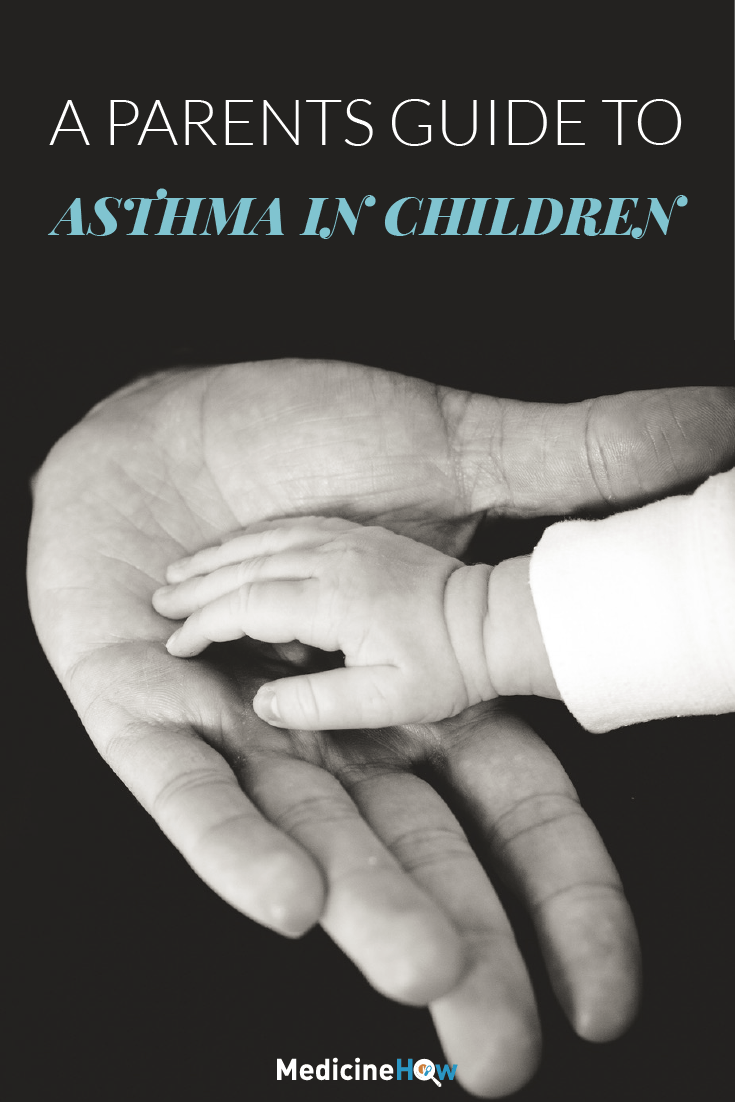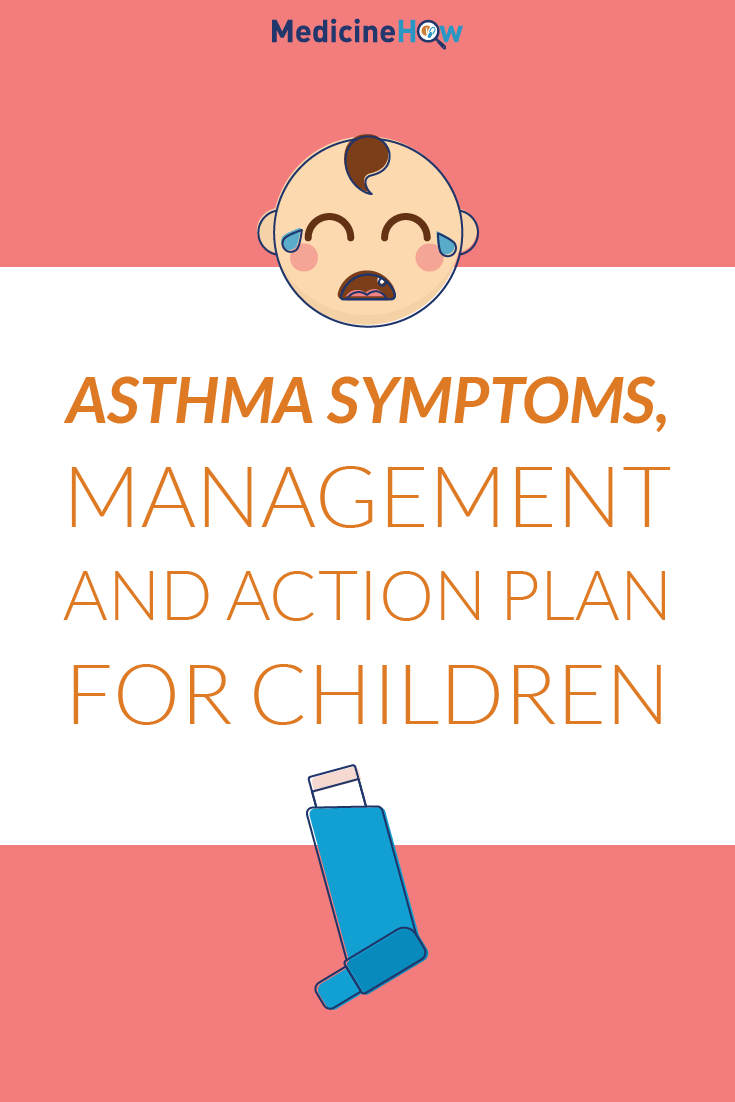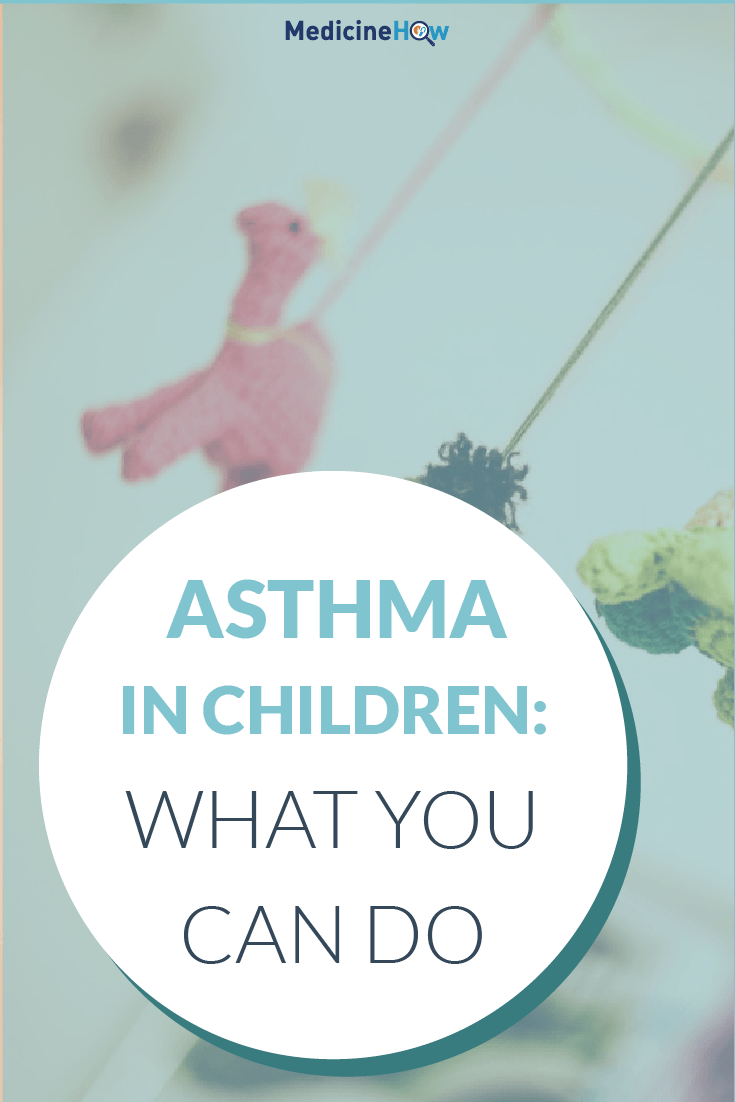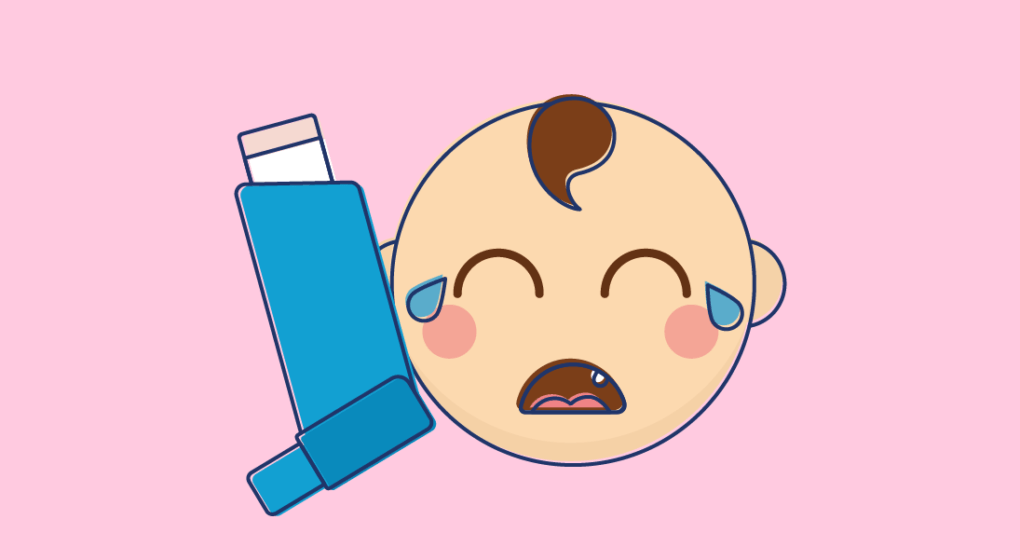
As a parent, it’s helpful to know a little about conditions that commonly affect young children, such as asthma. Today, we’re going have a look at what asthma in children is, how you can recognize if your kid has it, and what you can do about it.
Fortunately, with the right management techniques, children who have asthma should be able to participate in the same activities as other children without any interference from their symptoms. Let’s see just how!
What is asthma?
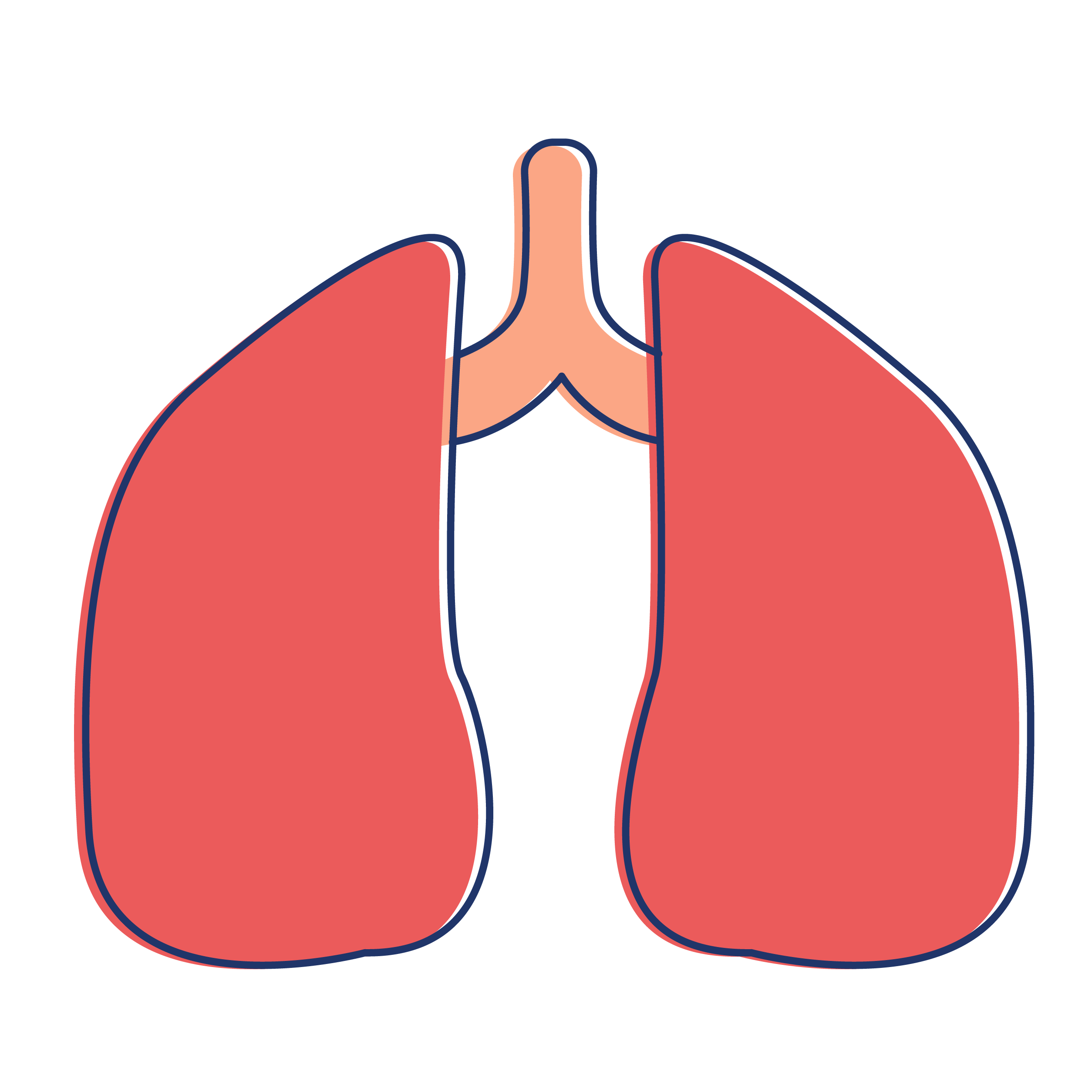
Asthma is a condition that affects the small passages in the lungs, called the bronchi. In children with asthma, these passages can become inflamed so that they constrict the airways and make it difficult for your child to breathe.
The condition can affect anyone but the symptoms usually first appear in childhood, so most people are diagnosed while they are young.
How common is it?
Approximately 20-25% of children occasionally have symptoms of asthma. Most children only have mild symptoms, such as wheezing when they breathe, but some will have more severe symptoms and may experience an asthma attack.
Young children between the ages of 2 and 8 years are the most likely to suffer from asthma. Fortunately, most people who have asthma as a child grow out of it by the time they reach puberty, although some people will continue to have some symptoms of asthma for the rest of their life.
What are the symptoms?
The main symptoms of asthma in children include:
Coughing
Difficulty breathing
Wheezing (whistling sound when breathing)
Cough that is caused by asthma is usually persistent and worse at night, during cold weather or when your child is exercising. If your child often coughs during these times, it’s a good idea to see a doctor to check whether your child has asthma.
The symptoms of asthma usually come and go. Many children will be fine for several months and then they might have more severe symptoms for a certain period, followed by another time of well-controlled asthma.
What triggers asthma symptoms?
There are many different things that can trigger symptoms of asthma in children or an asthma attack. The triggers can be different for each child, but parents can become familiar with the things that often make their child’s asthma worse so that they can be prepared to take action.
Common triggers for asthma include:
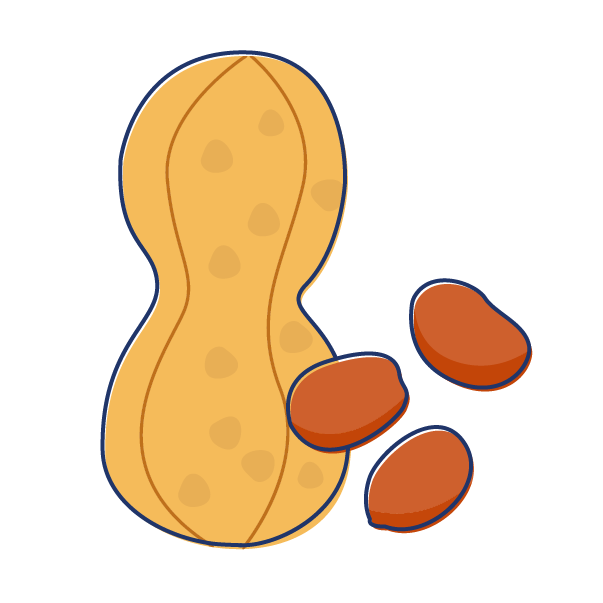
Sudden changes in weather or temperature
Allergic symptoms
Exposure to dust
Exposure to cigarette smoke
Exposure to pollens (change of season in Spring)
Exposure to animal hair
Foods (e.g. peanuts)
Drugs (e.g. aspirin)
What happens in an asthma attack?
During an asthma attack, the airway passages in the lungs suddenly become very narrow so that it is very difficult for the child to breathe. There are three main things that happen the make breathing difficult:
The muscles in the wall surrounding the airway passages tighten
The lining of the airway passages swells or becomes inflamed
Mucus builds up inside the airway passage.
When this happens, these is less space for the air to move through the lungs freely, so the child cannot get enough air to breathe. Signs of an acute asthma attack may include:
Severe wheezing
Persistent coughing
Rapid breathing
Chest tightness
Difficulty talking
Panic or anxiety
Pale and sweaty face
Blue tinge to the lips and fingernails
An asthma attack usually lasts from a few hours to several days, depending on the situation.
What should you do if your child is having an acute attack?
The most important thing you can do as a parent if your child is having an acute asthma attack is to stay calm. If you panic, it is more likely that your child will panic as well, which can worsen asthma symptoms and make it even more difficult for them to breathe.
Instead, sit down with your child and try to keep them calm. The reliever medication that they have been prescribed is the one that will help to relieve the symptoms most quickly, so that is what should be given.
Pump one puff of the reliever medication into a spacer and wait for your child to breathe in and out 4 times.
Repeat step one three more times, until they have take 4 puffs of the reliever medication
Wait for 4 minutes and then give another 4 puffs of the reliever medication, as in step 1 and 2. Repeat.
For most acute attacks, giving 4 puffs of the reliever medication every 4 minutes will help to reduce the symptoms after a few cycles. If you’re child appears to be getting better, you can manage it at home and may not need to go to the emergency department.
However, there are some cases when it is best to seek medical aid. If the symptoms are so severe that your child has great difficulty breathing or cannot talk, it is best to call an ambulance. Additionally, it the symptoms continue to get worse or their lips begin to turn blue, emergency services should be called.
Medications for Asthma in Children
There are three main types of medications that are used to manage asthma in children:
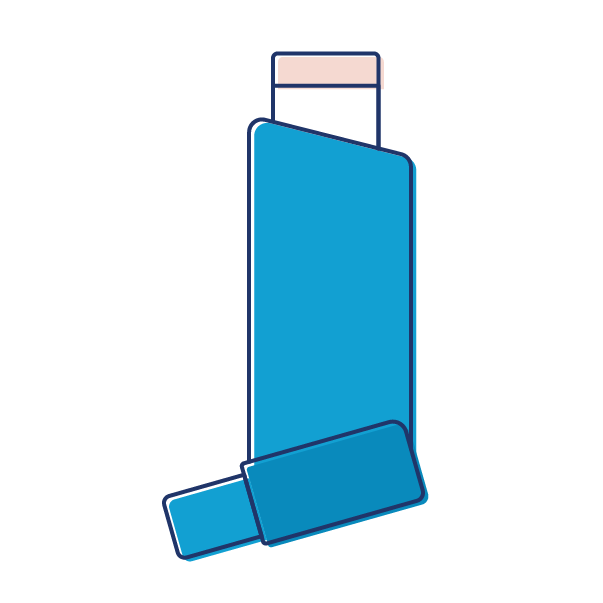
Preventers: help to prevent attacks by reducing inflammation in the airways so that air can pass through more easily (e.g. QVAR, Pulmicort, Flixotide, Tilade, Intal)
Relievers: quickly relax and reduce spasms in the airways to help your child to breathe during an asthma attack or more severe symptoms (e.g. Bricanyl, Ventolin, Atrovent)
Anti-inflammatory agents: help to reduce inflammation in the airways and prevent asthma attacks, used in addition to preventers for children with frequent asthma symptoms (e.g. Accolate, Singulair)
Most of these medications are inhalers, which means they need to breathed into the lungs to work properly. As the symptoms of asthma occur because of inflammation in the bronchi of the lungs, the best way to treat the condition is to deliver the medication directly to the area by breathing it in.
Should you use a spacer? And how?
For a metered dose inhaler (MDI), a spacer can help to deliver the medication into your child’s lungs. It is basically a plastic tube that hold the medication that has been pumped into it from a puffer so that your child can breathe it in. This is much easier than timing breathing in with the puffer, as the child can just breathe normally and the medication won’t get stuck on their throat.
Infants and toddlers should use a facemask in addition to the spacer to help get the aerosol medication into their lungs.
Wondering whether you need to wash the spacer?
- You should wash it once a week in hot, soapy water. Just soak it for 15 minutes, give it a rinse and let it air dry.
Alternative options to administer the medication is a dry powder inhaler or an nebulizer.
Asthma in Children Action Plan
If your child has asthma, it’s very important for you to have a plan in place in case your child’s asthma symptoms start to flare up. Your doctor can help you to create the plan and, once you’ve got it, you just need to make sure that it’s in an easy place to access if it’s needed. It’s a good idea to have a copy at home, at school and at any sporting clubs that your child participates in.
An asthma action plan is simply a document that outlines what to do when your child has:
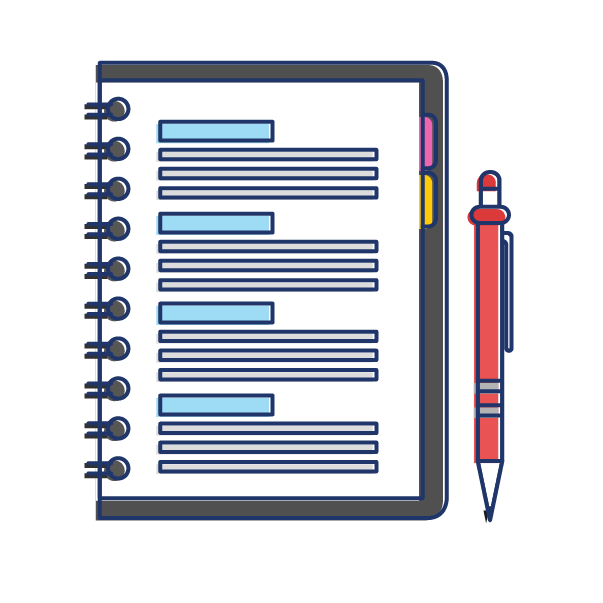
Well controlled symptoms (e.g. on a day-to-day basis)
A flare up with worse or more frequent symptoms
An acute attack of symptoms
The asthma plan should be updated at least once per year to make sure that it is still relevant to the situation of your child.
Keeping Track of Your Child’s Symptoms
The only way that you can really know whether your child’s asthma is well controlled is to keep track of the symptoms and how they change.
This also makes it a lot easier when you talk to your doctor about your child’s asthma because you can tell them with confidence how things have been going.
So what sort of things should you be recording to keep track of the symptoms?
How often your child has symptoms during the day (this shouldn’t be more than 2 times/week)
How often your child has symptoms at night (this shouldn’t wake them up)
How often you child needs reliever medication (this shouldn’t be more than 2 times/week)
If they are unable to participate in any activities due to symptoms (this shouldn’t happen)
You can keep a record of these things wherever is easiest for you. You might like to keep track in a diary - even electronically by adding a note to your phone calendar is fine - or a record sheet.
Pin It!
